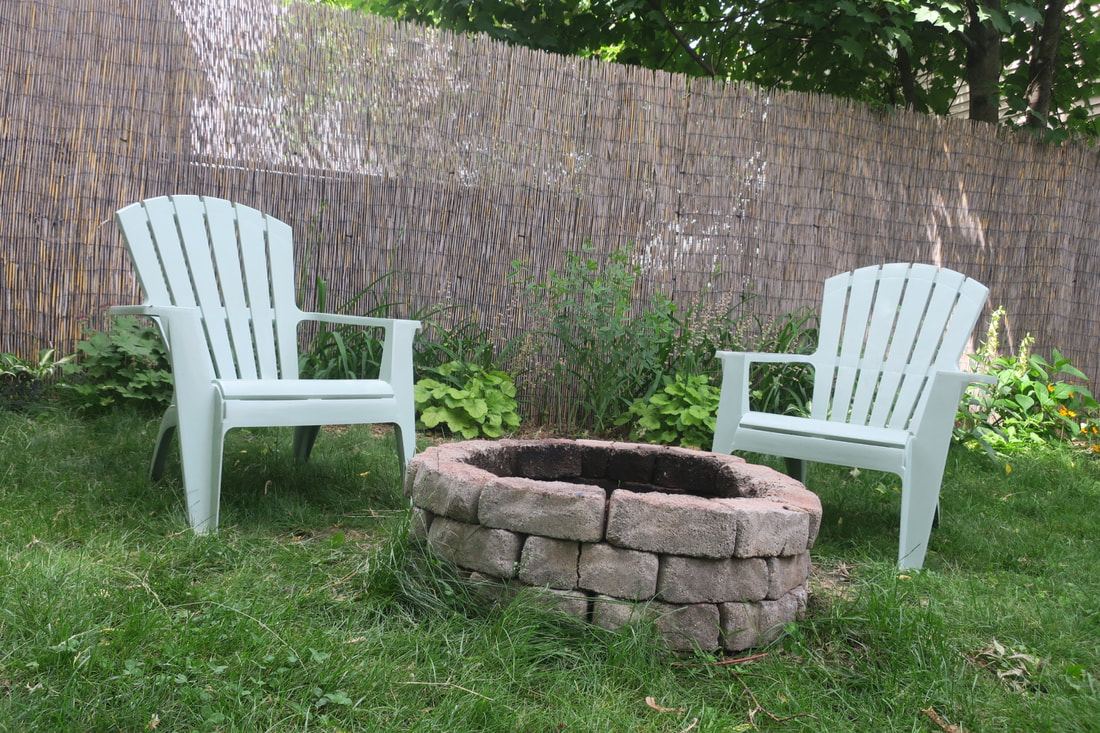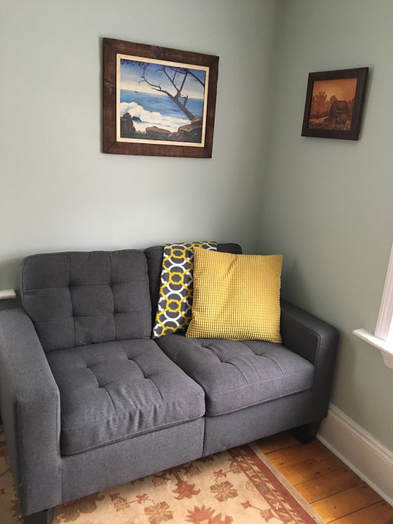|
Lifestyle changes can be challenging. Whether we’re moving to a new home, starting a new job, dealing with new family dynamics, or endeavoring to change old habits, we can become overwhelmed by clutter or a change in our schedule. We may think “I can’t do this, it’s too hard.” or “Look at all the work I still have to do, I’ll never be done!” If we believe such thoughts, then there’s a good chance they’ll prove true. Telling ourselves we can’t can be a self-fulfilling prophecy. On the other hand, if we acknowledge these thoughts and redirect them to something more positive, like, “I’m so grateful for this opportunity to improve my life.” or “I’ve made some progress in the past week,” we empower ourselves to change the situation. Change is hard - our brains and bodies search for shortcuts in order to seek comfort and conserve energy as a tool for survival. We feel secure in our predictable routines and ingrained habits. While it’s natural to seek comfort and security, it’s important to note that we humans have also evolved to adapt: we can learn new skills, overcome adversity, and problem-solve just about anything, at any stage of life. Think of all the uplifting success stories we’ve heard - most, if not all, involve perseverance, hard work, and of course change! Many of us in the United States live super busy lives. We work long hours, maintain homes, put meals on the table, pay the bills, nurture relationships, and somehow need to squeeze in some time to take care of ourselves. It can feel like too much - our homes and schedules are overstuffed, and yet, ironically, our culture encourages us to go after more. The good news is, the first step to changing our situation doesn’t involve lifting a finger! Well, unless we’d like to write about it. But this doesn’t mean it isn’t work. In fact, there’s some hard work involved, and it’s the critical first step to improving our situation. Changing our mindset and perspective is essential if we want to follow through with changing our habits. Our perspective is the lens through which we view our own personal reality - the way we see ourselves and the world around us. No one can change this for us. It’s work we have to do for ourselves. There’s no elusive magic formula - only effort, dedication, and consistency. We might be wondering, “when is the right time to start?” Right now. We do what we can with what we have. Start now, and a week, a month, a year, or even a decade from now, we won’t regret the decision to improve the situation. Over time, this practice of positive thinking becomes a new way of going though the day. New habits become so ingrained we may forget about the old ones altogether! Ready to take the first step? Here are some tips and examples to help guide a variety of situations:
Have you gone through life changes and used any of these tips? How did it work for you? Do you have any additional tips that helped you? Let me know in the comments below!
Elena
0 Comments
We’ve all heard the term ‘downsizing’ by now. Chances are, it’s associated with the idea of our elders forced by circumstance to give up the independence of long loved homes for a move to assisted living. Then, there are the empty-nesters, moving to be close to the grandkids or a warmer climate. A brighter prospect, often approached with healthy foresight as to considerations of aging and mobility in a smaller home. Still, downsizing often has a negative connotation. It smacks of sacrifice and compromise. But there’s another term buzzing about, which puts a much healthier perspective on the subject: Rightsizing is a conscious choice, a decision made at any age to simplify and organize our home life to best fit our material needs and desires. Elena first heard the term from Mary, of California Closets in Warwick, RI, when attending the Rhode Island Home Builders convention in April. “I call it rightsizing,” she said when Elena told her about our work. And how appropriate, especially for us, as we develop language for sharing the principles we’ve applied to our own lives. We call it enoughness: finding a balance in life where what we have in our homes truly suits us, serves us, and reflects who we are. Whether moving to a smaller home, or staying where we are, it’s about personally defining what’s right for our lifestyle. It’s about making our homes the functional and inviting spaces they ought to be - spaces which reflect our characters, interests and values. It’s about eliminating superfluities in our personal material world, which hinder us from being as creative, independent, and rich in time, energy and money as we wish to be. After all, our homes are one of our biggest investments, our lives precious, and time ever going by. In order to meet our own needs, we put serious consideration into whether our homes and what we keep and do in them suits us as best they can. It’s important to examine our lifestyles closely, and see how well they fit upon us these days. In rightsizing, we reflect honestly on and personally define our needs and preferences - not only now, but with consideration for the future as our needs and interests change. When we think of home, what do we want most to do there and how much space do we truly need to do it in? When we think of our finite allotments of time, energy, attention and money (and they are finite), how do we really want to use them? How does our current lifestyle match up to our claims? These are some foundational thoughts on rightsizing to ponder at any age. They are healthy reflections that can lead to a multitude of benefits. For instance, a smaller home leading to not only a smaller mortgage, but lower utility and maintenance costs, and easier housekeeping. This in turn then leading to less financial stress and more free time for family and fulfilling pursuits. There’s no doubt, making conscious and deliberate choices about our homes and lifestyles is freeing. It allows us to turn those precious finite allotments toward people, activities and interests which, through the rightsizing process, we’ve identified as most meaningful and important. In upcoming posts, we’ll share more on making this healthy perspective shift, as well as tips, methods and advice for those ready to make such changes in their lives. Please stay tuned as we address challenges, considerations, and benefits of simplifying and rightsizing. These are many and varied, somewhat different for each family or individual, but the effort to rightsize can only improve our quality of life - both personally and for the world around us.
In Simplicity, Chad |
Archives
February 2021
Categories |
|
Elena DaFonte Professional Organizer, East Providence, RI e-mail: elena@simplelivingstrategies.com phone: (617) 930-0577 hours: Monday - Friday, 8am - 5pm |
©2024 Elena DaFonte






 RSS Feed
RSS Feed
